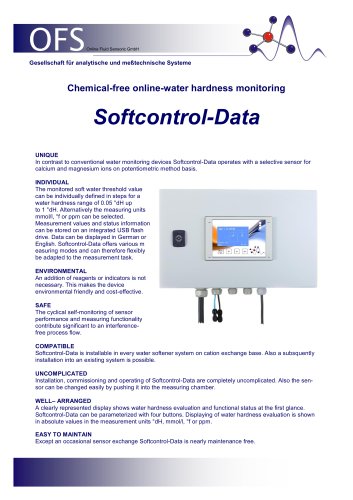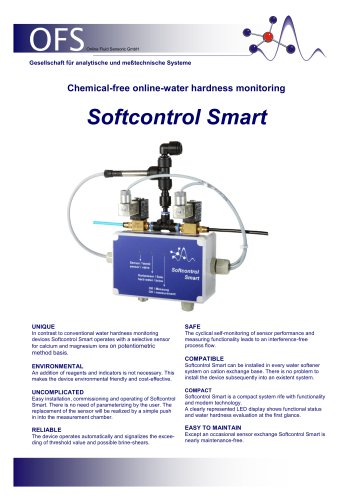
Catalog excerpts

Online Fluid Sensoric GmbH Gesellschaft für analytische und meßtechnische Systeme Electrolytic Hygienisation Chemical-free reduction of germs in industrial cooling circuits ALTERNATIVE The process of electrolytic hygienisation is an ecologic and economic alternative to the common degermination processes in cooling circuits. It is based on the disinfecting effect of oxygen radicals and its biological and chemical consequences for microbiological organisms . ENVIRONMENTAL In contrast to the degermination processes of biocide or chlorine dosing, ionization or UV treatment, there is no addition of oxidizing agents or toxins necessary. INNOVATIVE The specific feature of this process is based on the special material of the anode – an electrically conductive ceramic. Already with low concentration of chlorides in the water, the material develops under electric voltage sufficient chorine dioxide for an effective hygienisation. Further by-products or toxic residues could not be detected in practical tests. EFFICIENT The particular advantage over common degermination methods is, that no chemicals or other consumables are necessary. The system operates with low energy input and works properly also in turbid waters. The efficiency of this method depends on the degree of contamination and the dynamic operation conditions. SAFE The cyclical self-monitoring of the system contributes significant to an interferencefree process flow. Applications The electrolytic hygienisation is suitable for the use in the following processes and applications: Generation of process water and gray water Open cooling systems Hygienisation/legionella prevention in hot water circuits Hygienisation of process water Hygienisation of swimming pool water Hygienisation of treated gray water and waste wate
Open the catalog to page 1
Product information LABORATORY RESULTS • Disinfecting effects with algae, fungi and bacteria • Inactivation of biofilms at the electrodes • No ozone formation • No formation of endotoxins • Low formation of gases PRACTICAL EXPERIENCES IN A PILOT INSTALLATION The process of electrolytic degermination has been tested for 5 years in a remote cooling plant, which provides a cooling power of 1,2 MW. The cooling circuit had a volume of 10 m3, thereof 5 m3 in a storage tank. The cooling water circulated with 5 m3/min in peak times. The microbiologic contamination was prevented...
Open the catalog to page 2All OFS Online Fluid Sensoric GmbH catalogs and technical brochures
-
µdox handhold meter
2 Pages








